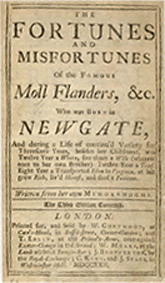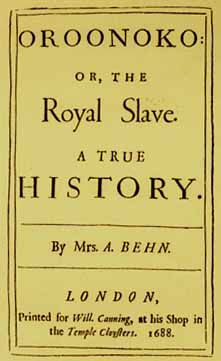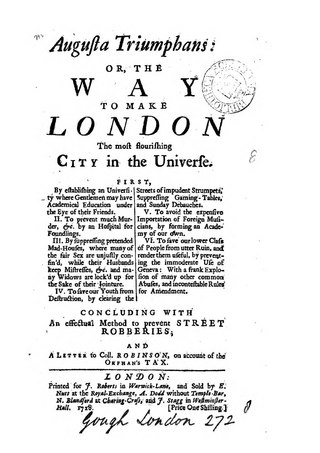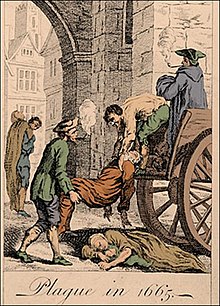
The Plague is a 1947 absurdist novel by Albert Camus. It tells the story from the point of view of a narrator in the midst of a plague sweeping the French Algerian city of Oran. The narrator remains unknown until the beginning of the last chapter. The novel presents a snapshot into life in Oran as seen through the author's distinctive absurdist point of view.

Daniel Defoe was an English novelist, journalist, merchant, pamphleteer and spy. He is most famous for his novel Robinson Crusoe, published in 1719, which is claimed to be second only to the Bible in its number of translations. He has been seen as one of the earliest proponents of the English novel, and helped to popularise the form in Britain with others such as Aphra Behn and Samuel Richardson. Defoe wrote many political tracts, was often in trouble with the authorities, and spent a period in prison. Intellectuals and political leaders paid attention to his fresh ideas and sometimes consulted him.

The Great Plague of London, lasting from 1665 to 1666, was the last major epidemic of the bubonic plague to occur in England. It happened within the centuries-long Second Pandemic, a period of intermittent bubonic plague epidemics that originated in Central Asia in 1331, and included related diseases such as pneumonic plague and septicemic plague, which lasted until 1750.

Samuel Pepys was an English diarist and naval administrator. He served as administrator of the Royal Navy and Member of Parliament and is most famous for the diary he kept for a decade. Pepys had no maritime experience, but he rose to be the Chief Secretary to the Admiralty under both King Charles II and King James II through patronage, diligence, and his talent for administration. His influence and reforms at the Admiralty were important in the early professionalisation of the Royal Navy.

Robinson Crusoe is an English adventure novel by Daniel Defoe, first published on 25 April 1719. Written with a combination of Epistolary, confessional, and didactic forms, the book follows the title character after he is cast away and spends 28 years on a remote tropical desert island near the coasts of Venezuela and Trinidad, encountering cannibals, captives, and mutineers before being rescued. The story has been thought to be based on the life of Alexander Selkirk, a Scottish castaway who lived for four years on a Pacific island called "Más a Tierra" which was renamed Robinson Crusoe Island in 1966. Pedro Serrano is another real-life castaway whose story might have inspired the novel.

Norman Richard Spinrad is an American science fiction author, essayist, and critic. His fiction has won the Prix Apollo and been nominated for numerous awards, including the Hugo Award and multiple Nebula Awards.
This article contains information about the literary events and publications of 1722.

Moll Flanders is a novel by Daniel Defoe, first published in 1722. It purports to be the true account of the life of the eponymous Moll, detailing her exploits from birth until old age.
A frame story is a literary technique that serves as a companion piece to a story within a story, where an introductory or main narrative sets the stage either for a more emphasized second narrative or for a set of shorter stories. The frame story leads readers from a first story into one or more other stories within it. The frame story may also be used to inform readers about aspects of the secondary narrative(s) that may otherwise be hard to understand. This should not be confused with narrative structure. A notable example is The Decameron.

Oroonoko: or, the Royal Slave is a work of prose fiction by Aphra Behn (1640–1689), published in 1688 by William Canning and reissued with two other fictions later that year. It was also adapted into a play. The eponymous hero is an African prince from Coramantien who is tricked into slavery and sold to European colonists in Surinam where he meets the narrator. Behn's text is a first-person account of Oroonoko's life, love, rebellion, and execution.

The Coral Island: A Tale of the Pacific Ocean (1857) is a novel written by Scottish author R. M. Ballantyne. One of the first works of juvenile fiction to feature exclusively juvenile heroes, the story relates the adventures of three boys marooned on a South Pacific island, the only survivors of a shipwreck.

Loimologia, or, an historical Account of the Plague in London in 1665, With precautionary Directions against the like Contagion is a treatise by Dr. Nathaniel Hodges (1629–1688), originally published in London in Latin in 1672; an English translation was later published in London in 1720. The treatise provides a first-hand account of the Great Plague of London; it has been described as the best medical record of the epidemic.

Solomon Eccles (1618–1683), also known as Solomon Eagle, was an English composer. However, he later became an active Quaker and distanced himself from church music.

Old St. Paul's, also titled Old Saint Paul's: A Tale of the Plague and the Fire, is a novel by William Harrison Ainsworth serially published in 1841. It is a historical romance that describes the events of the Great Plague of London and the Great Fire of London. It was the basis for the 1914 silent film Old St. Paul's.

The term plague cross can refer to either a mark placed on a building occupied by victims of plague; or a permanent structure erected, to enable plague sufferers to trade while minimising the risk of contagion. A wide variety of plague cross existed in Britain and elsewhere in Europe, until the plague largely disappeared by the eighteenth century. Additionally, the term "plague cross" can specifically refer to the "Plague Cross of Saint Zacharias of Jerusalem", a Western Christian sacramental invoking God's protection against diseases and plagues that often takes the form of a cross necklace or a wall cross.
John Noble was a bookseller and publisher in London in the 18th century. He issued works by Daniel Defoe, George Smith Green, Eliza Haywood, Jane Marshall, John Robinson, and others. As part of his enterprise he ran a circulating library near Leicester Square that stocked some 5,535 titles by the 1760s. By the late 1770s his business had been taken over by B. Desbrow. John's brother Francis Noble (d.1792) also worked in the book trade.

Augusta Triumphans: or, the Way to Make London the Most Flourishing City in the Universe by Daniel Defoe was first published on 16 March 1728. The fictitious speaker of this pamphlet, Andrew Moreton, is a man in his sixties who offers suggestions for the improvement of London. In particular, he fosters the establishment of a university, an academy of music, a hospital for foundlings and licensed institutions for the treatment of mental diseases. Moreover, he encourages the introduction of measures to prevent moral corruption and street robbery.
An Essay Upon Projects (1697) was the first volume published by Daniel Defoe. It begins with an introduction containing a portrait of his time as a "Projecting Age", and subsequently illustrates plans for the economic and social improvement of England, including an early proposal for a national insurance scheme.

Diseases, both real and fictional, play a significant role in fiction, with certain diseases like Huntington's disease and tuberculosis appearing in many books and films. Pandemic plagues threatening all human life, such as The Andromeda Strain, are among the many fictional diseases described in literature and film.


















